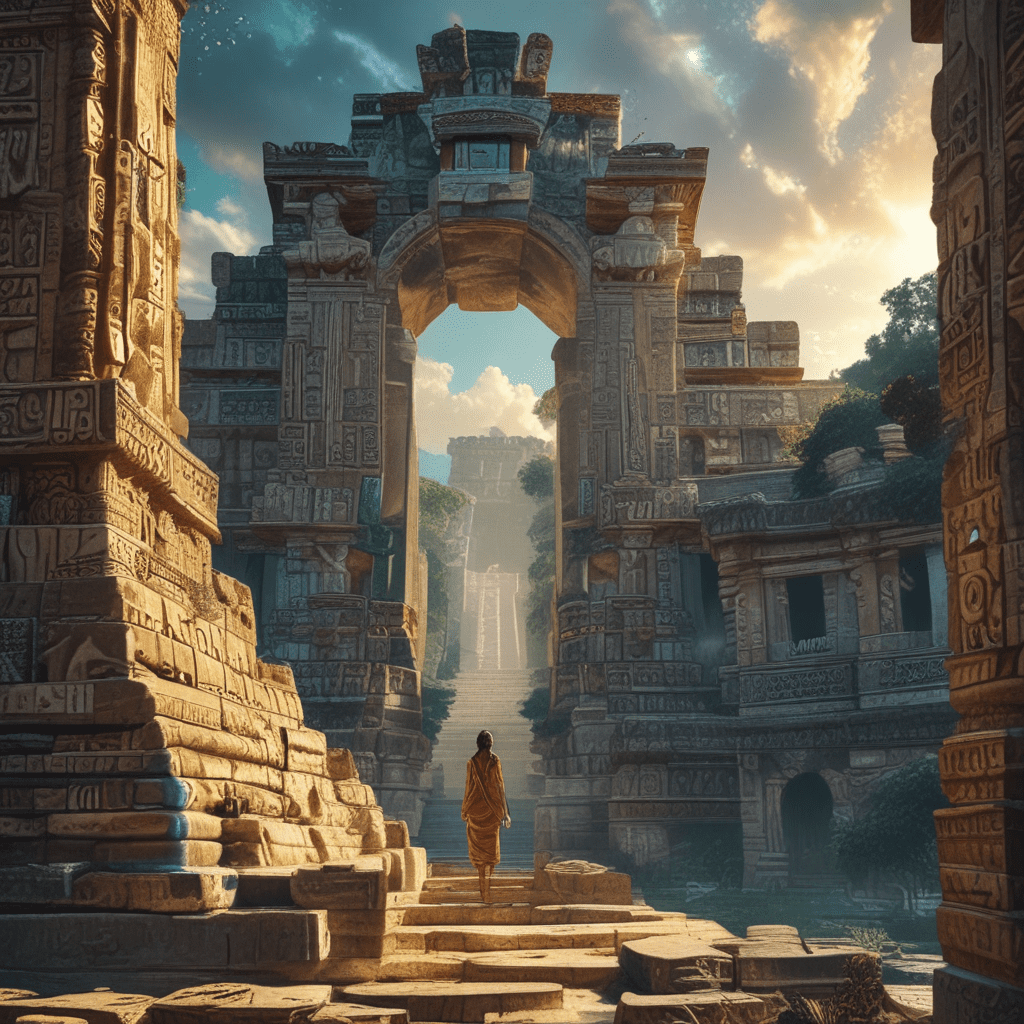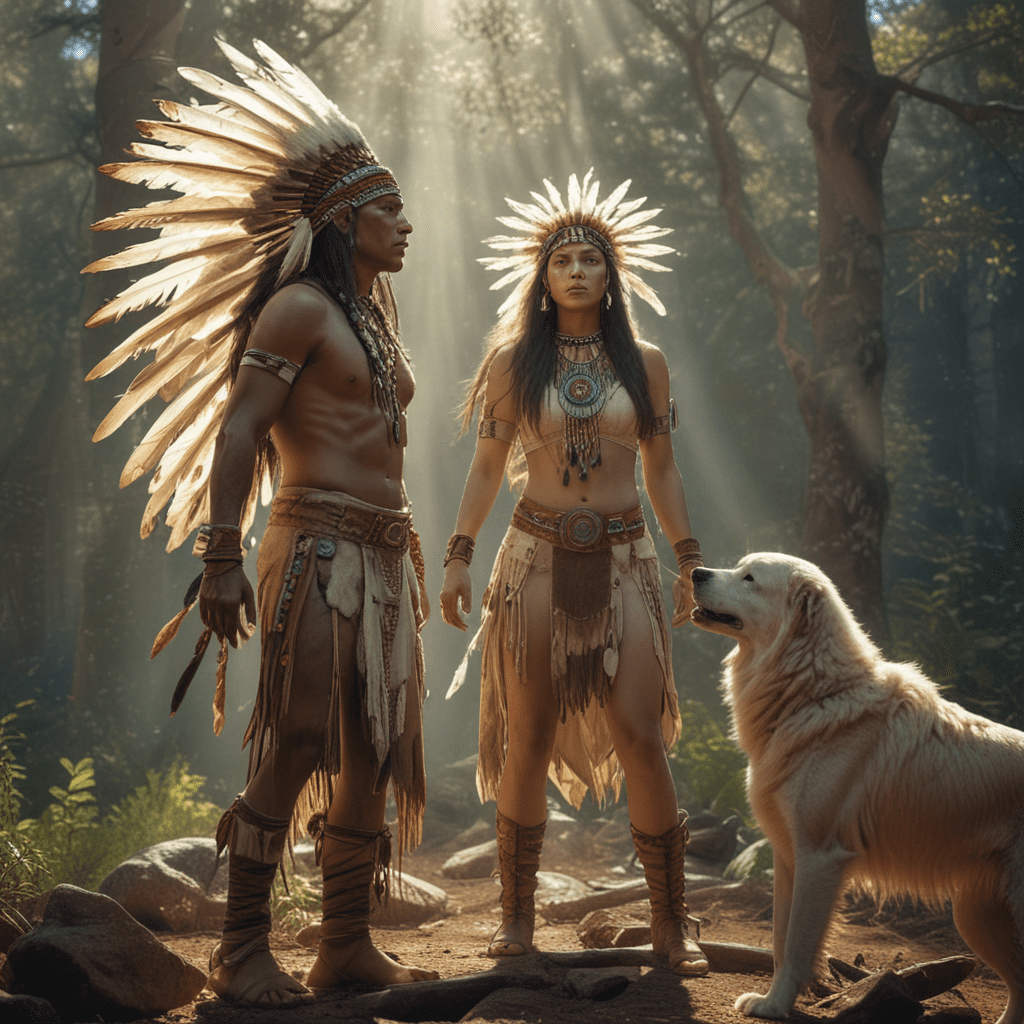Mayan Mythological Architecture: Temples as Cosmic Gateways
I. Introduction
A. Overview of Mayan Mythology and Architecture
The ancient Maya civilization, which flourished in Mesoamerica for over 3,000 years, left behind a rich legacy of architectural marvels steeped in profound mythological beliefs. From towering pyramids to intricate carvings, Mayan architecture reflects their sophisticated understanding of the cosmos and their deep reverence for the divine. This article delves into the fascinating world of Mayan temples, exploring their role as cosmic gateways and their intricate relationship with Mayan mythology.
B. The Significance of Temples in Mayan Culture
Mayan temples were the heart of their religious and cultural life. They served as sacred spaces for connecting with the gods, performing rituals, and commemorating significant events. These monumental structures were not mere places of worship; they embodied the Mayan worldview, representing the celestial realm, the earthly plane, and the underworld. As cosmic gateways, temples facilitated communication between the human and divine realms, allowing Maya leaders and priests to seek guidance from the gods and influence the course of events.
II. The Mythological Significance of Temples
A. Temples as Portals to the Underworld (Xibalba)
The Maya believed that temples served as gateways to Xibalba, the sinister underworld ruled by the Mayan death gods. Murals and carvings depicting skeletal figures and gruesome scenes of sacrifice often adorned temple walls, highlighting the Maya's complex relationship with the death realm. Rituals performed within temple sanctums were regarded as channels for communication with the deceased, allowing them to seek guidance and appease the underworld deities.
B. Temples as Homes for the Gods
Mayan temples were considered the earthly abodes of the gods, each deity associated with a specific temple complex. Elaborate sculptures and symbolic decorations adorned the temple walls, depicting the gods and their attributes. Priests and rulers conducted rituals and offerings within the temples, seeking divine favor and maintaining a harmonious relationship with the celestial realm.
C. The Ritualistic Significance of Temples
Rituals played a central role in Mayan life, and temples provided a sacred space for these elaborate ceremonies. Bloodletting, sacrifices, and offerings to the gods were common practices within temple precincts. These rituals were believed to appease the deities, ensure the well-being of the community, and influence the cosmic balance. The intricate astronomical alignments of many temples further emphasized their connection to the cosmos and the cyclical nature of time.
III. Architectural Features of Mayan Temples
A. Pyramids and Stepped Structures
The most iconic feature of Mayan architecture is the towering pyramids, often surmounted by temples. These massive structures, built with intricate stonework, served as platforms for religious ceremonies and astronomical observations. Stepped pyramids, with their terraced levels leading to the summit, symbolized the ascent to the celestial realm and the spiritual journey of the Maya towards enlightenment.
B. Astronomical Alignments
Mayan temples were often meticulously aligned with celestial events, showcasing their sophisticated understanding of astronomy. Solar solstices, equinoxes, and planetary movements were incorporated into the architectural design, revealing the Maya's deep reverence for the cosmos and their belief in its influence on human affairs. These astronomical alignments further cemented the role of temples as cosmic gateways, facilitating communication with the gods and aligning human actions with celestial rhythms.
C. Symbolic Decorations and Carvings
The intricate carvings and symbolic decorations that adorned Mayan temples were more than mere aesthetic embellishments. They served as visual narratives, conveying myths, legends, and historical events. Representations of deities, celestial bodies, and important figures in Mayan society provided insights into their worldview and their complex understanding of the universe. These carvings also facilitated the transmission of knowledge across generations, ensuring the continuity of Mayan cultural heritage.
IV. Theories on the Function of Mayan Temples
A. Observatories for Studying the Cosmos
The precise astronomical alignments of many Mayan temples have led scholars to believe they served as observatories for studying the movements of celestial bodies. The intricate carvings and architectural features often reflected astronomical phenomena, suggesting that the Maya used their temples to track the passage of time and predict celestial events. This knowledge was crucial for agricultural planning, ritual practices, and maintaining a harmonious relationship with the cosmos.
B. Centers for Political and Religious Power
Mayan temples were not merely religious sanctuaries; they also served as centers of political and social power. The rulers and elite controlled access to the temples, using them to solidify their authority and reinforce their divine legitimacy. Public rituals and ceremonies performed within the temple precincts reinforced the social hierarchy and the divine mandate of the ruling class.
C. Symbolic Representations of the Mayan Worldview
Mayan temples, with their intricate architecture, symbolic decorations, and astronomical alignments, were more than just physical structures. They were living embodiments of the Mayan worldview, reflecting their profound understanding of the universe, their reverence for the gods, and their relationship with the celestial realm. These temples served as microcosms of the Maya cosmos, connecting the earthly plane with the heavens and the underworld.
V. Conclusion
A. The Enduring Legacy of Mayan Temples
The magnificent Mayan temples, standing as testaments to their architectural prowess and profound mythological beliefs, continue to awe and inspire generations after their construction. These cosmic gateways, once bustling with rituals and ceremonies, now stand as silent witnesses to a rich and complex civilization. Their intricate carvings and symbolic decorations offer valuable insights into the Mayan worldview, their understanding of the universe, and their relationship with the divine.
B. The Importance of Understanding Mayan Mythology and Architecture
Exploring Mayan mythology and architecture provides a deeper understanding of the Maya civilization, their beliefs, and their place in the world. By delving into their creation myths, rituals, and sacred spaces, we gain valuable insights into the human experience and the enduring power of mythology in shaping human societies. The intricate details of their temples reveal their sophisticated understanding of astronomy, mathematics, and engineering, showcasing their remarkable intellectual achievements.
C. Future Research and Exploration
Further research and exploration of Mayan temples continue to uncover new insights into this fascinating civilization. Archaeological excavations, advancements in technology, and interdisciplinary studies offer promising avenues for deeper understanding of Mayan culture, mythology, and architecture. By combining traditional archaeological methods with cutting-edge technologies and diverse perspectives, we can continue to unravel the mysteries of the Maya and their enduring legacy.
FAQ
1. What is the significance of the ball court often found near Mayan temples?
The ball court was a crucial ritual space in Mayan culture. The ball game, often played with a rubber ball, held symbolic significance, representing the cosmic struggle between light and darkness, life and death. The ball court also served as a stage for public ceremonies and political events, further emphasizing its central role in Mayan society.
2. What is the role of the Chac Mool sculptures often found in Mayan temples?
The Chac Mool sculptures, depicting reclining figures holding a bowl on their stomachs, were believed to serve as offerings to the gods. These sculptures, often found near temple entrances, symbolized the act of sacrifice and the importance of appeasing the deities.
3. How did the Maya use their temples to influence agriculture?
The Maya used astronomical observations and cycles to guide their agricultural practices. By tracking the movements of the sun, moon, and stars, they could predict the seasons and ensure optimal planting and harvesting times. Temples, with their astronomical alignments, served as crucial tools for this purpose.



